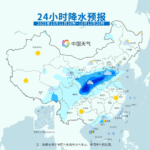Fujian Tulou, externally embracing heaven and earth and internally containing the cosmos, narrates the stories of time through the passage of years, documenting the development of social civilization. In July 2008, at the 32nd UNESCO World Heritage Conference, Fujian Tulou was officially inscribed on the World Heritage List.
Fujian Tulou
Fujian Tulou are large, fortified earthen buildings in southeastern China, primarily constructed between the 12th and 20th centuries by the Hakka people. These unique multi-storied structures, often circular in shape, were designed for communal living and defense, housing entire clans. In 2008, they were designated as a UNESCO World Heritage site for their exceptional architecture and representation of a communal lifestyle.
UNESCO World Heritage Conference
The UNESCO World Heritage Conference, formally known as the World Heritage Committee session, is an annual meeting where representatives from member states decide on new inscriptions to the World Heritage List. This conference evaluates cultural and natural sites of “Outstanding Universal Value” based on nominations from countries worldwide. Its history dates back to the 1972 World Heritage Convention, which established the international framework for protecting humanity’s most significant cultural and natural treasures.
World Heritage List
The World Heritage List is a prestigious catalog of cultural and natural sites deemed to have outstanding universal value, maintained by UNESCO since 1972. It includes iconic landmarks and natural wonders from across the globe, such as the Great Barrier Reef and the Pyramids of Egypt. The list aims to identify, protect, and preserve these irreplaceable treasures for future generations.


